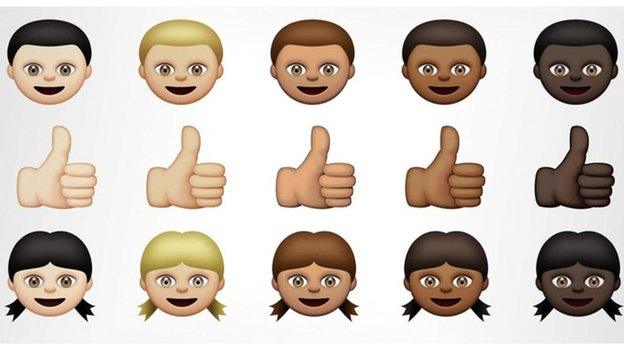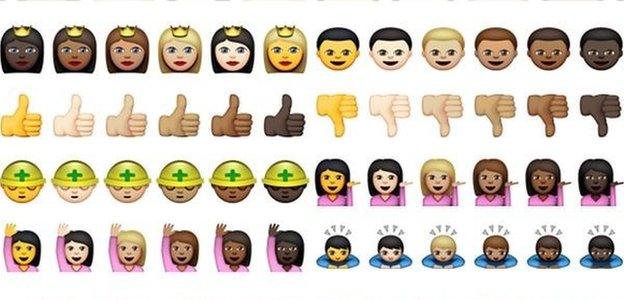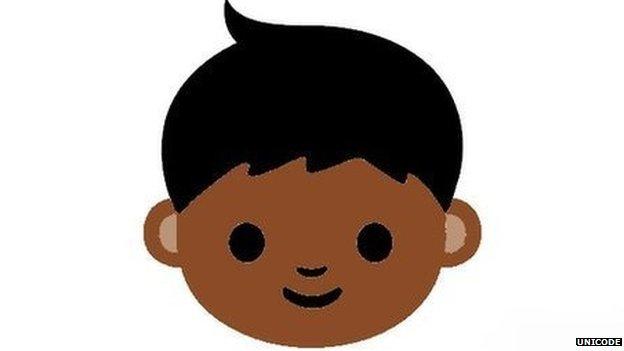Diverse emojis are coming. Might not be too soon though
- Published

A new set of emoji designs, said to be those being used by Apple, has been posted online
Since 2011 telling your mates that you're dancing in a duo in black leotards, offering a head rub or giving a simple thumbs up has been pretty tricky if you're not white.
But Apple has confirmed a more diverse set of emojis is finally close to being on your phone.
More skin tones, 32 new country flags and same-sex couple and family icons will be included in the update.
However there is still no release date at this stage for the new designs.
The new images feature in an upcoming iOS beta release - that's tech speak for a test version on iPhones and iPads.
Beta software is only available at first to developers with unfinished product getting their "bugs" fixed before official release.

A grid of emojis reportedly showing new icons, apparently published by a developer, has appeared online
The little icons are determined by Unicode who set the standard for text, numbers and emojis across all platforms.
Emojis originated in Japan and were added to the Unicode Standard in 2010, with apple Apple first including them "natively" (so it's an automatic part of your phone's settings) in iOS software the year after.
How do they pick the new icons?

Unicode said they were working on new icons last year
In November, we learned that Unicode were developing "racially diverse" emoji faces for use in messages.
To come up with the expanded palette of skin tones, Unicode used the Fitzpatrick scale, which was originally developed by dermatologists to classify different types of skin.
The scale is a numerical classification based on how skin reacts to ultraviolet light, running from 0 for very fair skin that "burns easily" to 35+ for very dark skin that "never burns", of human skin colour.
It is a recognised tool for dermatological research into the colour of skin.
Follow @BBCNewsbeat, external on Twitter, BBCNewsbeat, external on Instagram and Radio1Newsbeat, external on YouTube